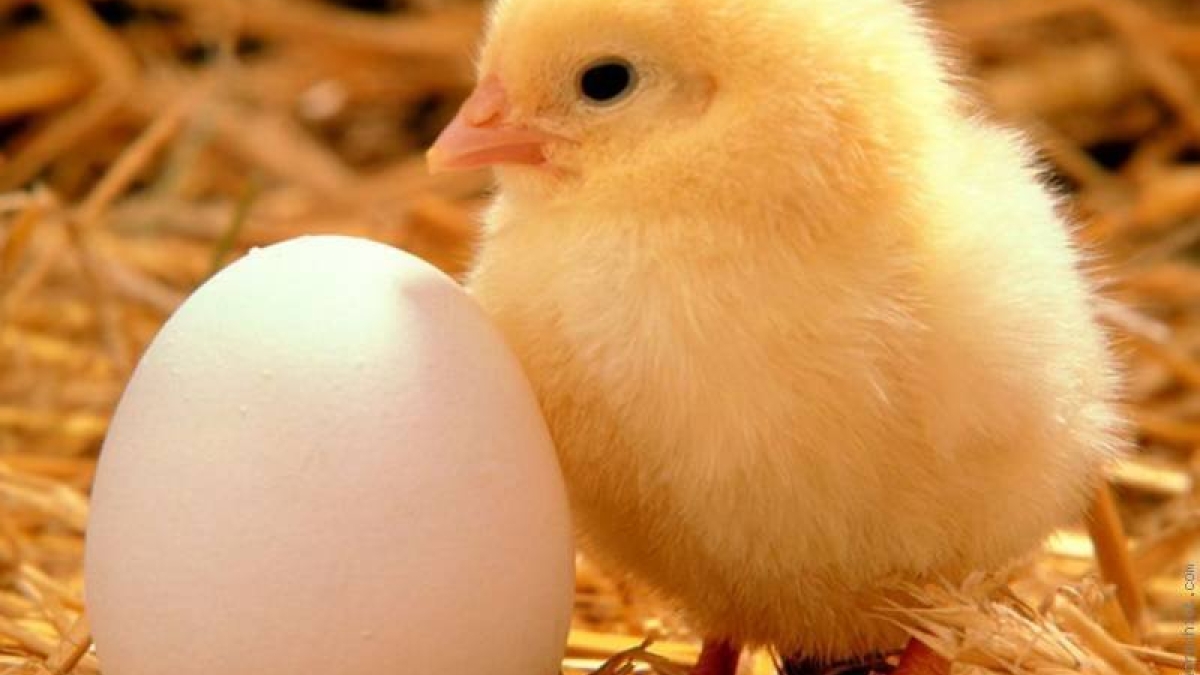Chicken and egg question (and answer) for rural Uganda

According to the USDA, Americans consume some 8 billion chickens and 75 billion chicken eggs annually. Despite the importance of chicken in the U.S. diet, few in this country rely on the birds for their economic livelihood.
In rural Uganda, as in much of Africa, chickens are more than a dietary staple. These animals are often an essential component of indigenous lifeways, providing local village women with both food for sustenance and a vital source of income.
Jagdev Sharma, a researcher at Arizona State University’s Biodesign Institute, along with collaborators from NAGRC (Uganda) and Keggfarms (India), are pioneering a new approach to raising poultry in Uganda, with the potential to help lift hundreds of thousands of families out of cyclic poverty and toward a healthier and more sustainable condition.
As Sharma explains, the key to this transformation is the introduction of a hybrid chicken known as the Kuroiler into rural communities throughout Uganda: “Kuroiler is a high-performance scavenger developed at Keggfarms by cross-breeding. This chicken thrives under harsh rural environments. The strategy to introduce these birds in rural Uganda is likely to substantially increase returns from family flocks.”
Sharma has just received a $1.4 million grant from the Bill and Melinda Gates Foundation to pursue the project, which is designed to reduce poverty and improve the quality of life for Uganda’s needy rural households.
As in most of Africa, more than 85 percent of Uganda’s population live in rural settings, typically in small villages where poultry raising has deep roots. These small-scale, backyard farms – generally under the care of village women – offer one of the most efficient farming systems and also foster social and economic independence for the women who care for the birds.
Nevertheless, increasing food needs in Uganda has caused severe strain on many areas of the country. The indigenous chickens used by villagers tend to perform poorly in terms of hatchability, survival, egg production, body weight and resistance to common diseases. With small flocks of around five to 15 chickens per household, many families are unable to satisfy basic nutritional needs, particularly when the rate of bird mortality – primarily from disease – often claims 80 percent of the flock.
The Kuroiler chickens offer a significant improvement in virtually all areas of breeding. While indigenous chickens lay just 30 to 40 eggs per year, the Kuroilers easily can produce five times that number, or around 150 to 200. Kuroilers also grow to about double the body weight of their native counterparts, providing much more edible meat.
Kuroilers were first introduced successfully in India more than a decade ago. The birds are low-maintenance scavengers that thrive on household and agricultural waste. Sharma’s new effort seeks to extend India’s success with Kuroilers into a large swath of rural Uganda, serving some 140,000 rural households by the completion of the project in two years.
“The vision of the project is to reduce poverty and improve the quality of life for rural households," Sharma says. "In addition to producing more eggs and meat and increasing family income, we anticipate that the economically self-sustainable distribution system we plan to use in Uganda will create new entrepreneurial opportunities in local communities. In time, other African countries are likely to follow Uganda’s lead and begin the highly effective Kuroiler distribution process to improve self-reliance.”
Following the introduction of Kuroilers, the project will monitor the survivability and productivity of the chickens while also assessing the effectiveness of a leading-edge avian vectored recombinant vaccine offering lifelong, duel protection from two of the leading pathogenic diseases plaguing chickens in this region, Newcastle’s Disease and Marek’s Disease. The chickens also will receive vaccinations against other diseases, including infectious bronchitis and Gumboro. Unlike local chickens, which succumb to very high rates of disease-related mortality, most of the vaccinated Kuroilers are expected to flourish in a healthy, disease-free state.
In 2011, a pilot version of the project demonstrated the viability of the Kuroiler idea in Uganda, furnishing rural villagers with birds that successfully co-existed with local chickens while significantly outperforming them in both egg and meat production. In addition to the material advantages of the hybrid chickens in terms of food productivity, the project helped foster greater self-reliance and upward mobility among indigenous rural farmers.
In the first year of the new project, around 236,000 people belonging to some 33,800 rural Ugandan families will receive the Kuroiler chickens, while the project’s second year will expand the reach of the program to more than 100,000 households or around 700,000 people. The effort is expected to provide villagers with over 100 percent more meat and over 400 percent more eggs, compared with the output of local chickens.
In economic terms, each family will see close to a three-fold increase in chicken-related income over a year, with the overall benefit to the target region amounting to $5,251,650 over the course of the two-year initiative.
Additionally, the project will provide specialized workshops, to be held in rural assembly halls. Here, local women will receive information about family nutrition, poultry rearing, methods of income generation and new approaches for managing family finances.
Sharma stresses that this package of tools – centered around the hearty and highly productive Kuroiler – offers renewed hope for healthier and more sustainable local economies in an area of the world which continues to face severe challenges:
“Introduction of a highly productive hybrid is a novel approach previously untested in Africa – one we believe holds great potential. In the future, we plan to expand this work to other parts of Africa.“